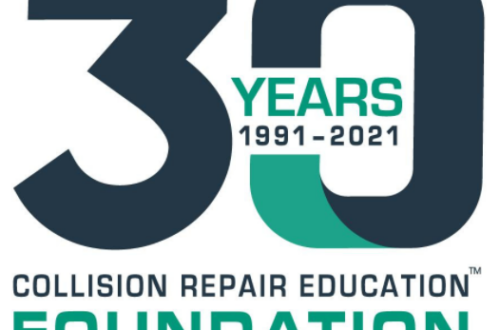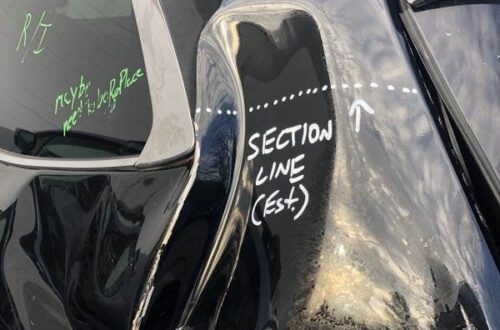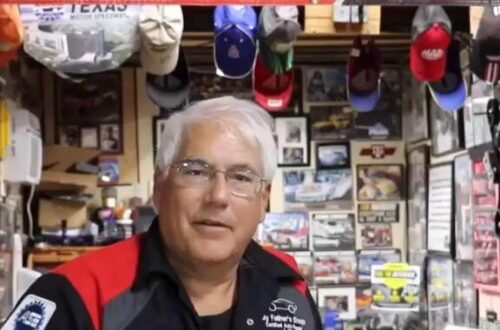
Parts Authorization, Indemnification and More—Documentation Part 3
Published September 23, 2014 in Autobody News
Over the past two issues (see August and September Autobody News), industry attorney Erica Eversman has offered some insights into the various types of documentation that collision repair facilities can use to protect their interests and help them obtain proper compensation for work performed. In the final installment in this series on repair documentation, Eversman helps explain the purpose for and how to use the Parts Notice/Authorization and the Indemnification/Hold Harmless Letter, with a few additional documents.
The Parts Notice/Authorization is an important form for repair shops to utilize since most states have statutes pertaining to the use of used or aftermarket parts which requires the shop to notify the consumer if these types of parts are used to repair their vehicle. When choosing the parts to use in a repair, the facility has several options: new OEM parts, aftermarket parts, or salvage yard parts (which the insurance industry commonly refers to as “recycled parts”), but dependent on and subject to state laws, the repair facility must be sure that the consumer understands which parts are being utilized in their vehicle—and that disclosure can be easily be substantiated by having their customers sign a Parts Authorization.
Often, the insurance company instructs the repair facility to utilize aftermarket parts in the repair, but ultimately, the consumer is putting their life in the repairer’s hands, not the insurer’s. “Nothing gives a repairer the right to knowingly put an unsafe part on someone’s vehicle,” Eversman admonishes; however, there will be situations that repairers face when they are not entirely comfortable with the insurer’s suggestion to use particular used or aftermarket parts in the repair. In those situations, if the consumer is unwilling/unable to pay for new or new OEM parts when the repairer has concerns about using used or aftermarket, Eversman states, “the repair facility is ethically responsible for performing a safe repair, despite pressure from insurers, so the repairer must ensure that the consumer is notified that the repairer really prefers to use different parts during the repair process.”
Although aftermarket or recycled parts may work just fine the majority of the time, there is always the potential for problems when parts used in the repair are not new OEM. In the event of an accident related to the failure of these parts, the repair facility needs to make certain it has protected itself by proving the insurer refused to pay for new OEM parts, the consumer was informed about the use of these parts but refused to pay the difference for the preferred parts, and the repairer possesses this signed document establishing the consumer’s notification and consent. “People don’t want to think about accidents,” Eversman points out. “Generally, they don’t think of it until after an accident when they’re already vulnerable. We, as an industry, need to do a better job of educating consumers in advance.”
In addition to the Parts Notice/Authorization, repair facilities that are averse to installing certain used or aftermarket parts should also ask their customers and the customer’s insurer to sign an Indemnification/Hold Harmless Letter which explains that the repairer is only using the specified parts because both the customer and the insurer insisted on them. This document makes the insurer liable for the use of the specific parts and documents their agreement to pay for any lawsuits or damages the repairer suffers for problems with the parts. Insurers rarely agree to sign this document, often opting to pay for the appropriate part instead, but if the insurer insists on the use of potentially unsafe parts and the customer agrees, the repair facility must protect itself from the insurer’s influence; otherwise, the insurer will claim it has no responsibility for the use of those parts in the repair.
Because manufacturers don’t offer a warranty on aftermarket parts, using these in a repair can lead to a partial or complete restriction on the vehicle’s bumper-to-bumper warranty. OEMs cannot automatically void a warranty due merely to the use of aftermarket parts, but they can restrict or void the warranty if the aftermarket part results in problems with the vehicle or causes an accident due to part failure or malfunction. Still, many insurance companies’ DRP contracts require the use of aftermarket parts, yet they will not insure the shop’s liability if there is an issue.
Though insurers say they will “guarantee” the work of a DRP shop, doing so requires assuming liability, which insurers invariably try to avoid. While they generally say they offer warranties on the aftermarket or used replacement parts, insurance companies’ warranties do not cover the facility’s workmanship unless specifically stated. As a result, consumers are too often told by insurers that the insurer “guarantees the repair”, but if a consumer actually reads what the insurer is guaranteeing, it is often nothing more than a statement that it will try to address a problem with an aftermarket part after the consumer has addressed the warranty problem with the part manufacturer. Eversman states, “the insurance company’s guarantee is useless. Warranties are like insurance policies – they contain more exclusions than actual coverage. The insurers will say they don’t fix cars—they just pay for repairs and that all of the decisions for how the vehicle was repaired were the collision facilities; however, their ads brainwash consumers by creating the impression that insurers are involved in the repair. These ads focus on a magical restoration without the involvement of the consumer or the repair facility. Much of this glib advertising creates the wrong impression for consumers that doesn’t reflect reality.”
Eversman also strongly discourages shops from offering a warranty on anything besides their workmanship, especially on parts. Thanks to the Magnuson-Moss Warranty Act, insurers can offer a warranty for the repairer’s workmanship and parts used in the repair, though this puts them on the hook to assume liability in the event of a problem. Eversman advises shops to “refuse the insurer’s demands to offer aftermarket or recycled parts warranties. Repairers should clearly state in all customer documents that you guarantee your services and repair work, but never offer a warranty for any part used in the repair. Doing so only subjects repairers to potential lawsuits involving double or treble damages and the payment of the consumer’s attorney fees if there are issues with the parts.”
In addition to the documents discussed in detail throughout this three-part series, Eversman feels that shops should also be aware of some additional documentation that they may find useful. The Customer Notice of Insurer Deficiency is a form that serves to inform the consumer of their insurance company’s refusal to pay for a proper, safe repair. Eversman notes, “this form can help with the public relations battle; the insurance companies don’t like to be called out on their actions, so they are more likely to handle the problem. It also reminds the customer that you are the collision repair professional and that you are refusing to perform an unsafe repair, despite the insurer’s demand that you breach this part of your contract with your customer.”
The Customer Notice of Insurer Delay keeps the consumer in the loop by alerting them to the fact that the insurer is causing a delay in the repair process. The Vehicle Damage Insurance Election Form, which only applies in first-party cases, is a document that the customer can send to their insurance company demanding to know what specific remedy under the insurance policy the insurer is choosing. This forces the insurer to define whether it is “electing to repair” and accepting all liability for the repair or paying for the loss in money. Though the insurer is unlikely to sign this document, the customer can note their refusal to responds to the request, and this can be useful if a trial is necessary as the insured has the right to demand a response from the insurer to questions related to their claim.
A Notice of Additional Cost is a nice way to inform the insurance company of an additional repair cost, granting them a specific amount of time to respond before resuming the repair, since this saves rental car time for the insurer. It also gives the impression that the insurance company must respond to you because you’re in control of the repair process. Lastly, an Authorization and Release gives you the right to use photos or videos of the repaired vehicles for your own purposes (such as on your website).
Obtaining proper repair documentation is essential to providing customers with the best possible repair. Eversman encourages all collision repair facilities to protect their businesses by contacting a local attorney to begin drafting these vital documents.
Erica Eversman is the Chief Counsel for Vehicle Information Services, Inc. and founder of the Automotive Education and Policy Institute.




